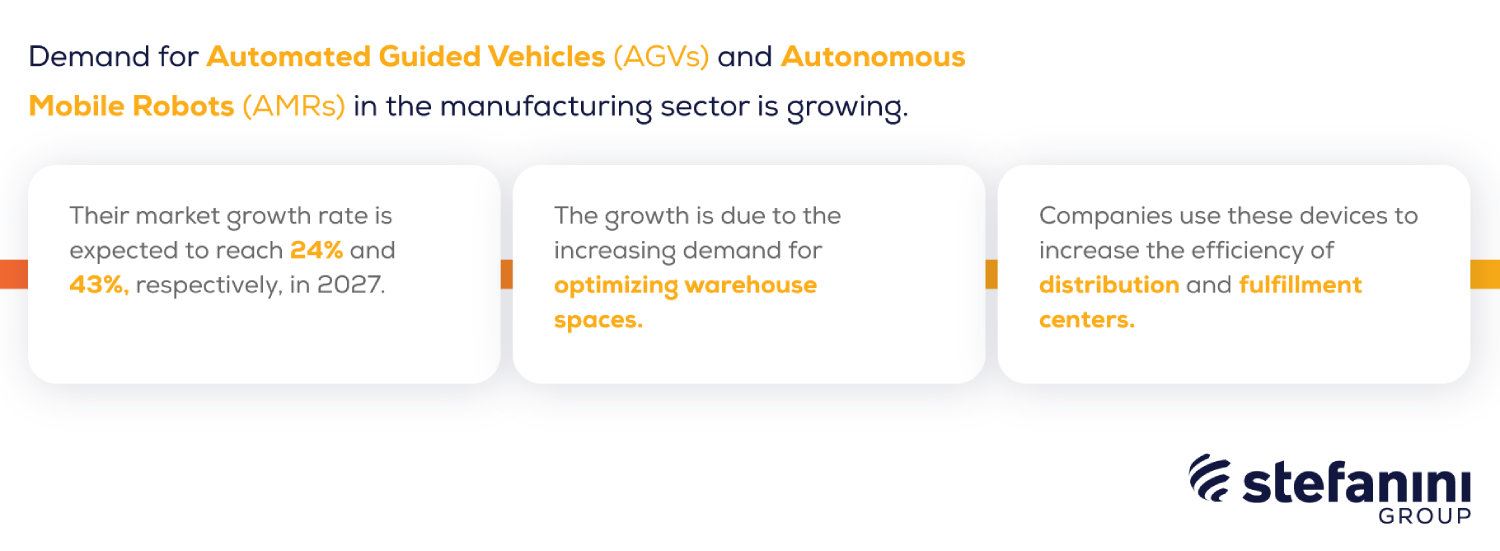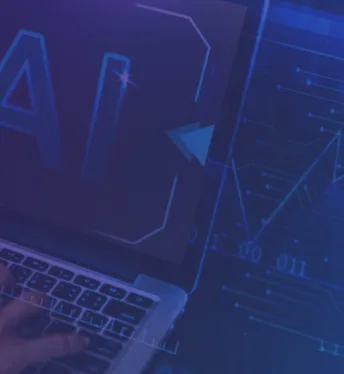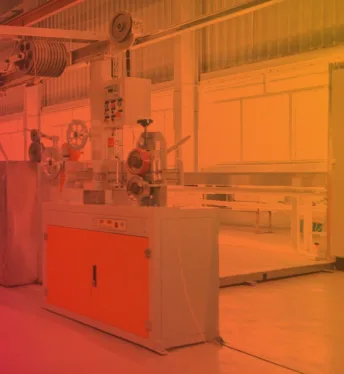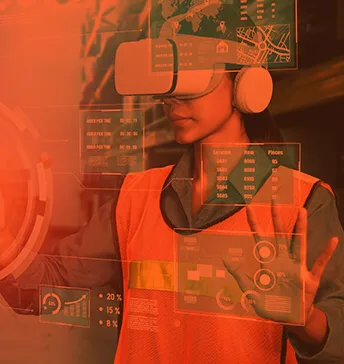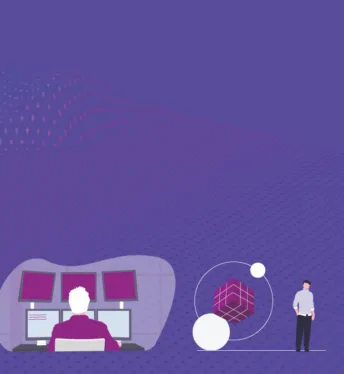Artificial intelligence is gradually revolutionizing traditional warehouses into smart ecosystems that utilize advanced technology to automate operations.
It interconnects different technologies that work in unison to enhance the accuracy and speed of warehouse activities. AI enables machinery to mimic human capabilities. The growth of AI technologies unlocks newer possibilities beyond warehouse mobility and material handling.
Artificial Intelligence is a combination of:
- Machine learning
- Neural networks
- Deep learning
- Computer vision
- Speech and visual recognition
The technology enhances the cognitive abilities of computerized equipment. It enables them to make independent decisions, translate human languages, and recognize speech and imagery.
Warehouse management involves:
- inventory management
- material handling
- processing and packaging
- supply chain
- demand planning.
Using AI in warehouse management enhances the quality and consistency of routine operations.
AI technology is enjoying accelerated growth post the pandemic period. Companies are learning from experience and are exploring innovative strategies to address supply chain and logistics challenges. Enhancing productivity is among the best selling points for AI technology in warehouse management.
Want to learn more about artificial intelligence in logistics? Check out our article!
Benefits that companies reap by using AI-based technology within their warehouses
1. Increased productivity
Warehousing involves several activities that are repetitive and rely on human labor. For a long time, human employees have taken charge of material handling, packaging, sorting, and storage. These activities are prone to errors and inconsistencies because of human influence.
Such inaccuracies increase downtime, resulting in a pile-up of workloads. The productivity of the human workforce reduces after long hours of work. It causes time and resource wastage, increasing the cost of operations in the warehouse.
Warehouse operations present challenges and opportunities that differently impact workflows. Companies utilize AI technology to improve productivity by:
- Proactively predicting performance
- Identifying supply chain challenges
- Reducing turnaround times to enhance customer order fulfillment.
AI technology provides tools to ease the interaction of employees with warehouse equipment.
61%
of employees acknowledge that AI technology increases productivity. The most popular AI solution is the use of robots for material handling.
These are specialized systems for:
- Picking, packing, and transporting different sizes of loads within the warehouse
- Handling repetitive tasks following a specific set of instructions or routes without fatigue
- Maintaining the same speed and quality of operations
Robots can handle more loads than the human workforce at any given time. By automating material handling, the company can establish a robust supply chain or production schedule and increase productivity. A 1% increase in robot density translates to a 5.7% increase in productivity.
Robots are critical devices that facilitate better inventory management within facilities. Some robots are programmed to sort, tag, and scan products for storage and distribution.
It enhances stock control as the systems automatically count and update inventory records. Robots perform these activities faster than human employees, increasing efficiency.
Advances in AI technology are revolutionizing how companies convert performance data into revenues.
- Robots, AGVs and AMRs collect and analyze a lot of data in real-time.
- The intelligent units create a database of recurring operational patterns. Their algorithms self-train to increase the productivity of smart manufacturing systems.
- AGVs, AMRs, and robots reduce the cost of operations and collect accurate data for enhancing supply chain visibility.
AI improves the predictive capabilities of machinery. It identifies and combats possible defects and warehousing challenges. That way, companies can respond to dynamic changes in logistics and supply chains. They achieve this without lowering the productivity of personnel and equipment. The company can also respond to equipment failures. AI facilitates a shift from corrective maintenance to predictive asset maintenance.
2. Enhanced warehouse safety
Safety is among the priority areas in warehousing. Optimizing the layouts of facilities increases storage and movement spaces. Ample space allows the safe movement of employees, machinery, and products. Warehouse activities are:
- High-risk
- Medium-risk
- Low-risk
Handling hazardous products by human beings in confined spaces is a risky activity. Several hazards exist on the warehouse floor. Unnecessary human movement can result in collisions or workplace injuries. Handling heavy loads deals a blow to the health and well-being of warehouse staff.
The evolution of smart warehouses is taking shape at impressive speeds. Organizations are working hard to increase the technical and cognitive capabilities of robots.
They use machine learning and advanced neural networks to enhance these capabilities. Robots and cobots are indispensable material handling utilities that can be:
- Customized for use in hard-to-access locations.
- Programmed to transport hazardous or fragile products with high levels of precision.
- Leveraged to reduce the risk of material damage or accidents due to collisions.
Advanced computer vision and image processing techniques enhance the development and utilization of Autonomous Guided Vehicles (AGV) and Autonomous Mobile Robots (AMR) in facilities. These systems move independently within the warehouse and do not require the oversight of human beings.
The navigation of AGVs follows predetermined tracks or paths. Restricted movement prevents them from colliding with obstacles in the warehouse.
AMRs are more advanced than AGVs. Their operation and route planning rely on:
- Sensors,
- Machine learning technology,
- Computer vision
- AI algorithms
These technologies are vital for collision detection and avoidance. The AMRs do not require a track for their navigation.
There is a growing demand for AGVs and AMRs. Their market growth rate is expected to reach 24% and 43%, respectively, in 2027. The growth is due to the increasing demand for optimizing warehouse spaces. Companies use these devices to increase the efficiency of distribution and fulfillment centers.
AI-based warehousing equipment can perform autonomous risk assessments within the facility.
- Collect requisite data using installed sensors
- Analyze warehousing activities and work patterns
- Assign risk scores for every warehousing activity
The safety assessment is critical for workforce planning. The company gets to understand the risk levels for different activities. AI facilitates dynamic slotting, effectively distributing work among human beings and robots. Robots handle medium and high-risk activities, while humans perform low-risk activities.
Modern augmented reality (AR) and virtual reality (VR) devices utilize AI technology. These technologies are vital for enhancing the safety training of warehouse employees. Companies develop and distribute scenario-based instructional videos and standard operating procedures through these platforms. Safety training is critical for minimizing risks and injuries in facilities.
3. Accuracy of operations
We must appreciate that most warehouse operations are dynamic. A slight change in routines could destabilize the accuracy of activities. Human errors are among the leading causes of accidents, equipment, and product damages.
Multi-skilled individuals are collectively responsible for guaranteeing the success of warehouse operations. It means that a wrong decision by an employee will interrupt subsequent workflows. Companies can avoid the obvious pitfalls through warehouse automation using AI technology.
AI systems use intelligent algorithms that seamlessly coordinate different activities.
They centralize the management of employees, equipment, and customers enable companies to improve operational and resource planning. Machine learning enhances the precision and accuracy of warehouse robots.
Different companies are embracing AMRs and are working towards strengthening machine learning techniques. AI technology is beneficial for:
- Route optimization
- Equipment performance management
- Travel time optimization, thereby improving the accuracy of different warehouse activities.
Interested in integrating AI into your business? Take a look at our AI solutions package.
4. Better cost savings and lower carbon footprints
Companies spend a considerable amount of cash on daily operations. The money is spent on employee wages and maintaining equipment and systems. It also involves costs for replacing damaged goods or compensation for workplace accidents.
These costs increase when the productivity and accuracy of processes are low. Companies aim to minimize operational costs through automation.
AI is instrumental in reducing direct and indirect labor costs. The smart warehouse systems measure several performance indicators. The process performance data provides valuable suggestions for improving the efficiency of processes.
Automating warehouses means that the company uses sustainable equipment. Most of these units save a great deal of energy and are low on emissions. AI-based automation equipment can reduce the carbon footprint of warehouses. Currently, warehouse buildings generate 10% of the total logistics and supply chain CO2 emissions.
Final Remarks
AI is a revolutionary technology that is bound to disrupt warehouse operations. The technology is vital for improving current productivity levels and the accuracy of processes. AI lowers the cost of operations and strengthens safety standards in facilities.
The possibilities of AI in warehouse automation are endless. Companies must explore opportunities for implementing and integrating them in their operations.
About the author: Luke Goodwin is an experienced marketing manager with a demonstrated history of working in the logistics and supply chain industry. Currently, he works as a CMO at FlexQube. To learn more about FlexQube and see more articles from the industry you can visit their news website.
Streamline your Warehouse Operations with Stefanini AI Solutions!
AI is becoming standard in many warehouse settings due to the many benefits it provides. Step into the future and find out all of the ways our AI packages can revolutionize your business.
